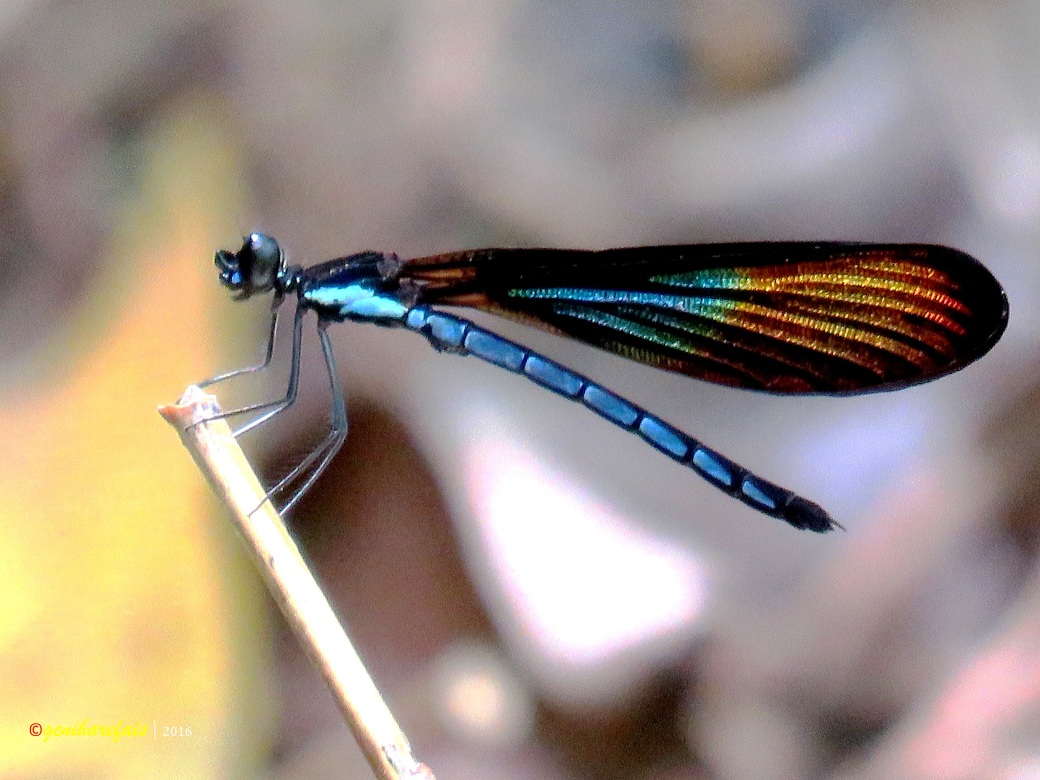
The male of Rhinocypha monochroa – Chlorocyphidae
My encounter with this damselfly species has been a long time, but I never got to take pictures of them. I was able to take photos of them on November 13, 2016. Based on the existing references, known as the Blue Stream, Rhinocypha monochroa – Chlorocyphidae.
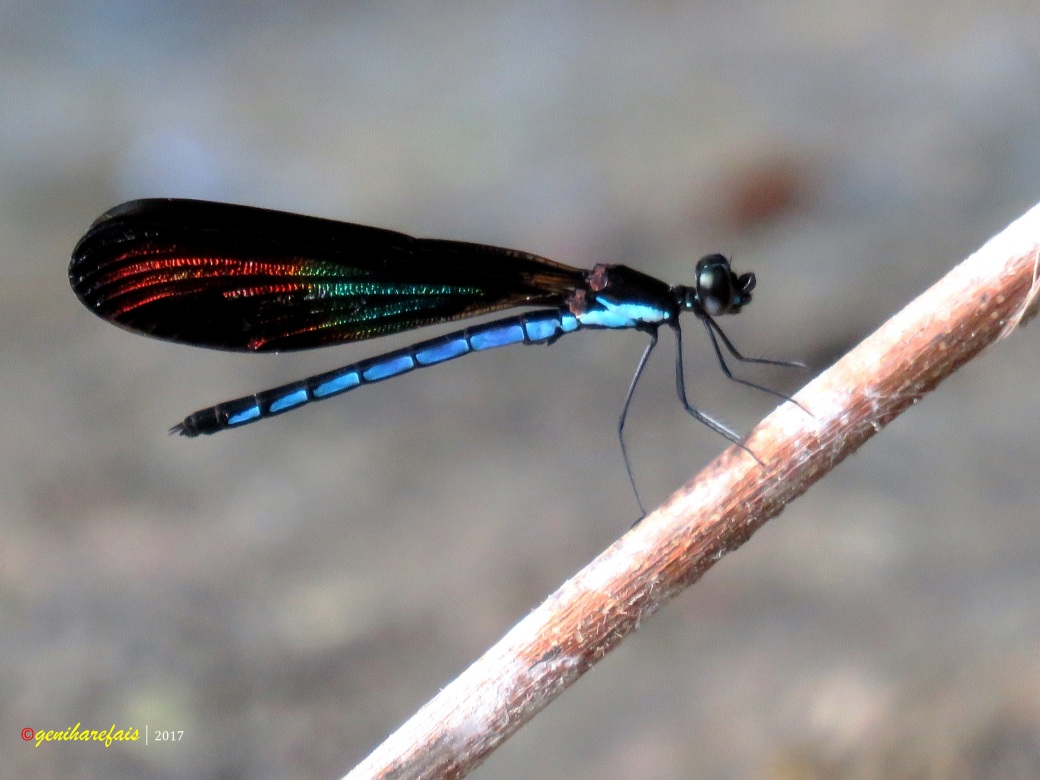
Male with black color, and blue on the side of the thorax and abdomen
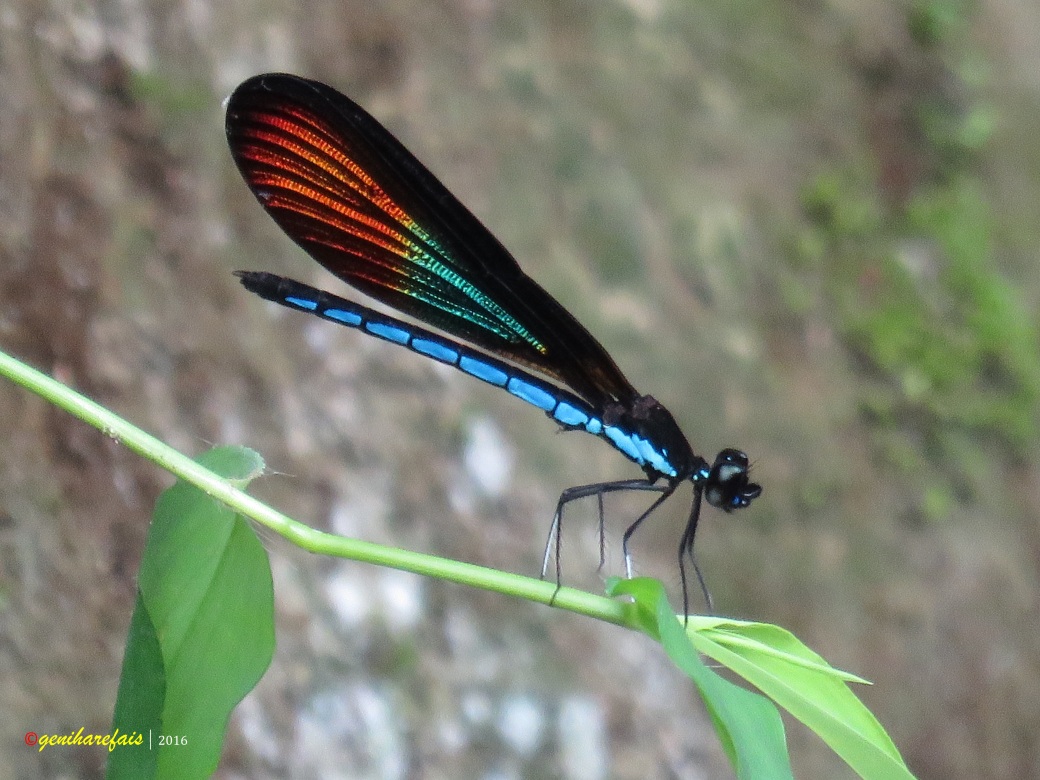
Male black wings with rainbow colors
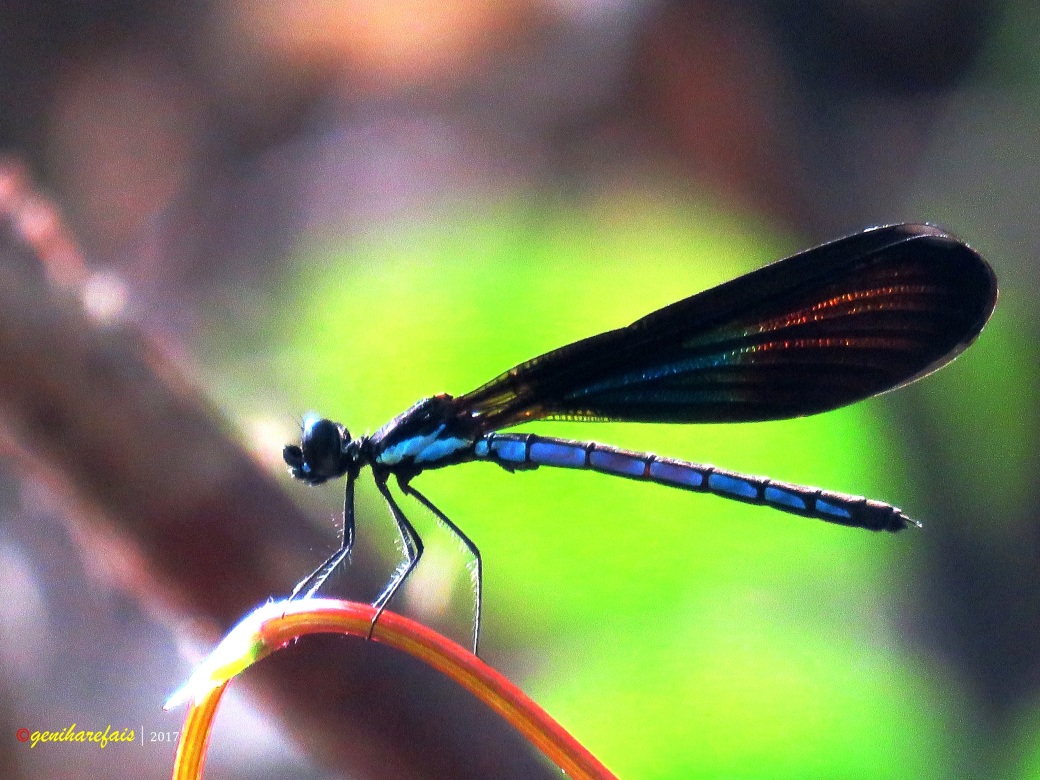
This damselfly liked the dimly lit places
This species is damselfly, very interesting, measuring 2.7 to 3.3 cm, with dominant blackish color, from head to the abdomen, although there are other color variations, especially in males. From field observations, this species are very familiar, approachable and they fly only at short distances, with fluttering wings like the flying butterfly style – flapping slowly.
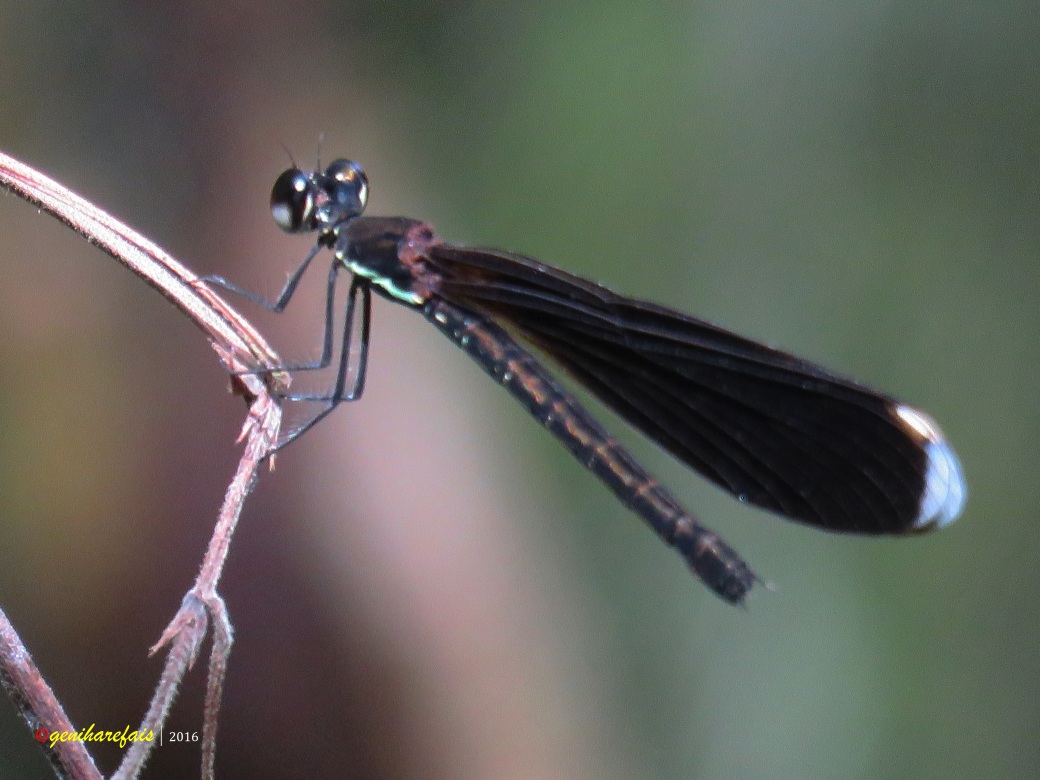
Female of Rhinocypha monochroa – Chlorocyphidae
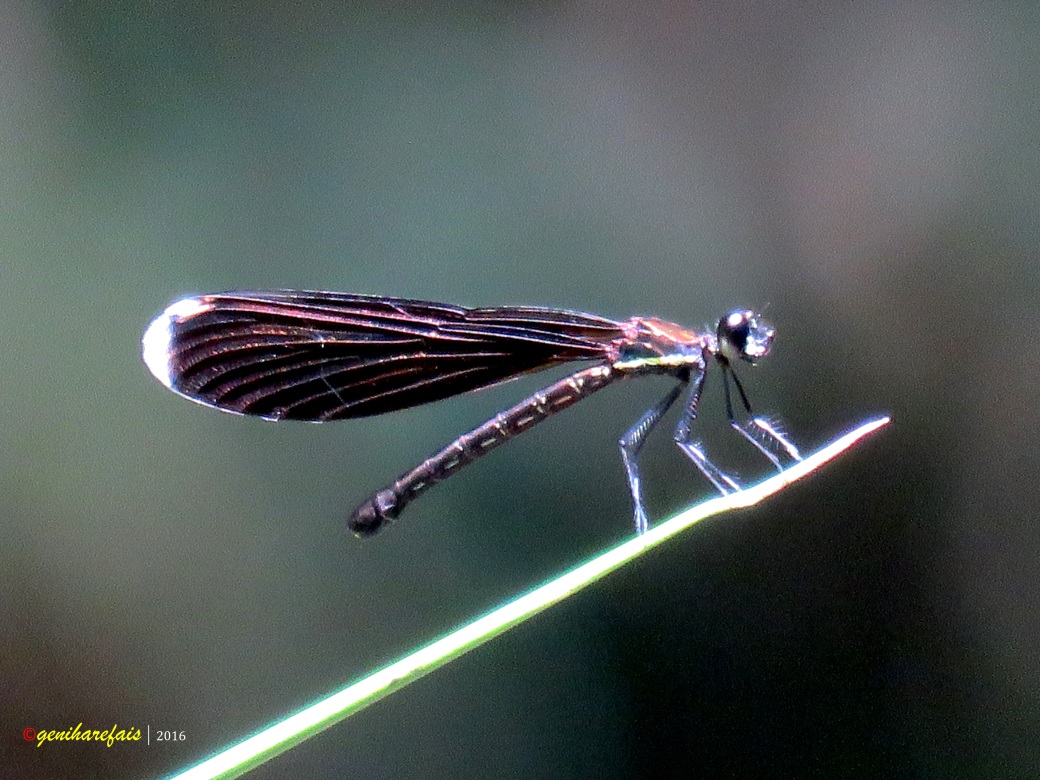
Body and wings are black with white-green stripes on the side
Damselfly males generally have attractive shades of color, with bluish stripes on the side of the black thorax and black abdomen, the wings are all black, but the wings have a rainbow (reddish, bluish, and greenish), which makes this species look very beautiful. In females, thorax and abdomen are also black, but on the side has a white-green strip. Females all black wings, with white on the wingtips.
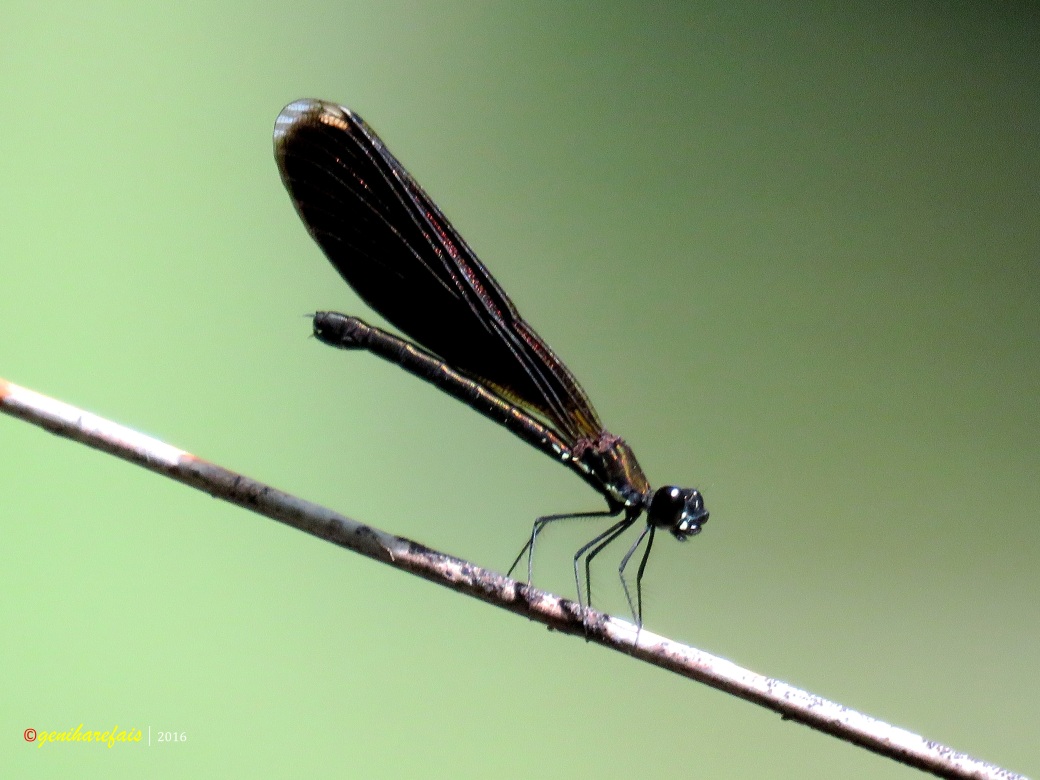
Female head and legs are black, with white color on the wingtips
These species choose to occupy a dim habitat, and commonly found a stream of rivers that are not swift, which are filled with trees, bushes, or tall grass – which can block the sun. We can found this species often join with Celbothemis, Trithemis, Neurothemis, Orthetrum, and Diplacina. In Parepare and Enrekang (both in South Sulawesi), the number of species is very abundant.
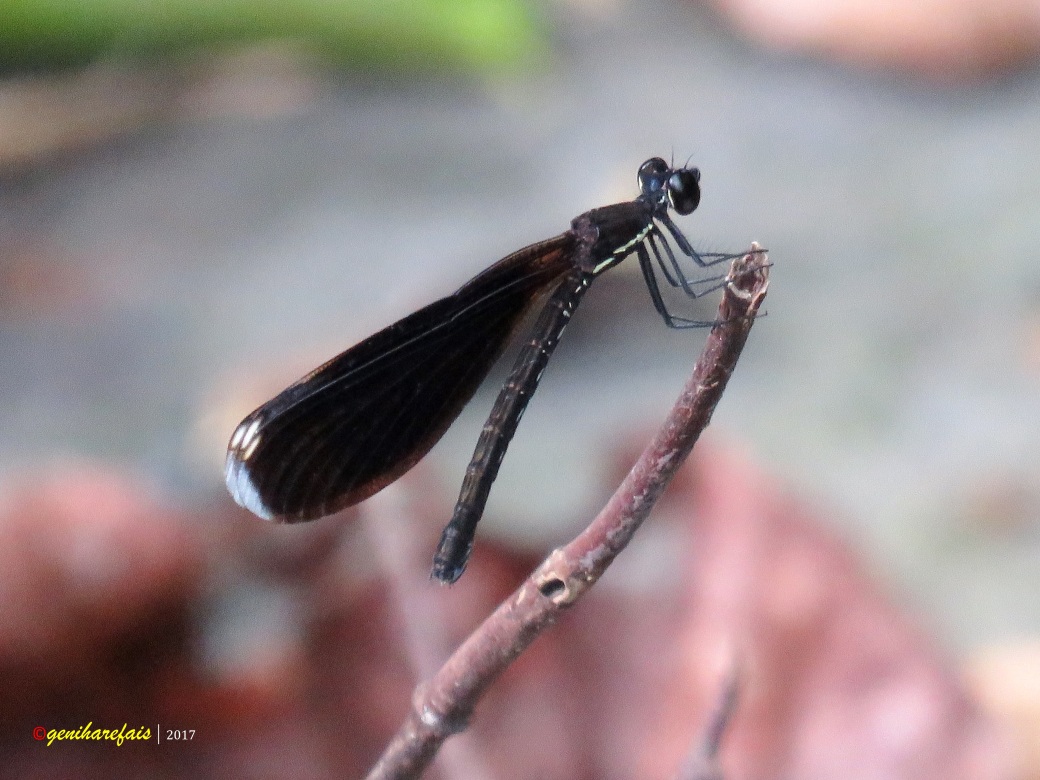
When flapping their wings, they looks like tiny flying butterflies
Although in the field I always find males and females together, but I have never found them mating. Sometimes I find females laying eggs on things that are in the water. The species is active throughout the day, from morning to sunset, and it seems they have no specific place to sleep.
Photos by Geni Harefa Ais, 2016-2017
IUCN Notes:
⬛ No data